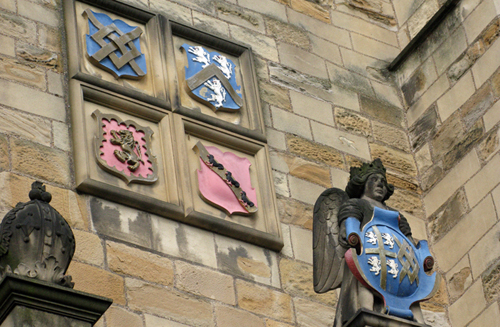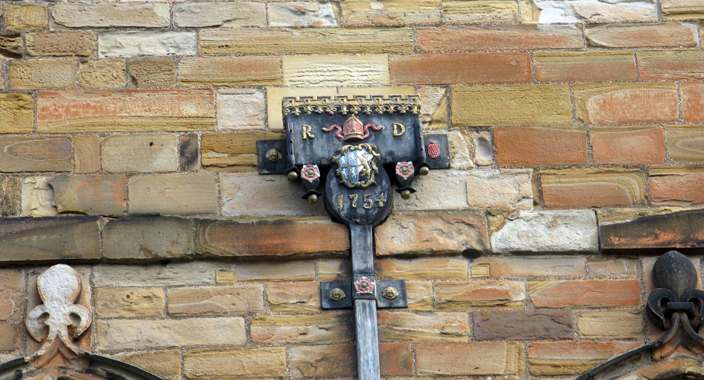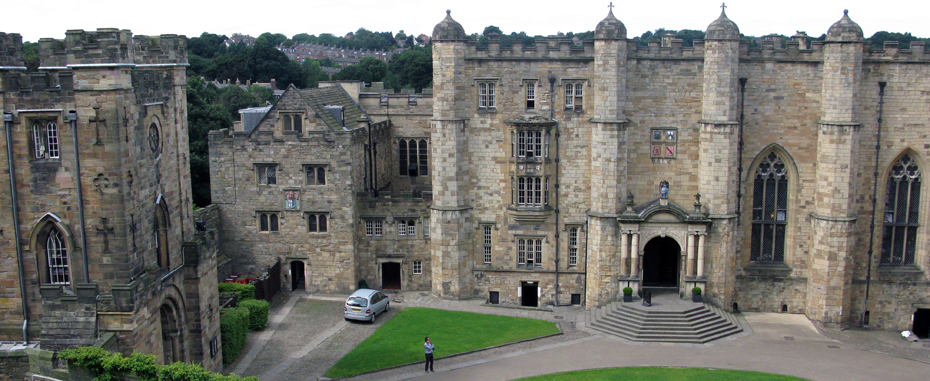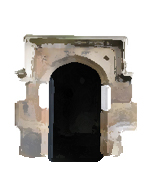The Courtyard tells the story of the Castle’s occupants.
Why are there so Many Coats of Arms?
Unlike many other castles, this wasn’t a family residence passed on from one generation to another. It was the home of successive bishops, many of whom altered the work of their predecessors, adding to the Castle according to their taste, or to the fashion of the time.
Adding your coat of arms was a good way of personalising a building to show that it was yours. That’s why there are so many coats of arms, some with dates.

Coats of arms of John Cosin, whose bishopric in the seventeenth century was marked by extensive refurbishment of the Castle and Cathedral, giving him an ideal opportunity to put his coat of arms on the two buildings, especially the Castle, his residence.
© Jeffrey Veitch
What do the initials on some of the drain pipes mean?
Many of the drains have initials, the second of which is always a D.
For example, W D. This was an abbreviation for William Dunelm (of Durham), in other words, William, Bishop of Durham – substituting the title for a family name.

Eighteenth-century drain with the coat of arms of the then Bishop, Richard Trevor, whose episcopate was from 1752-1771.
© Jeffrey Veitch


